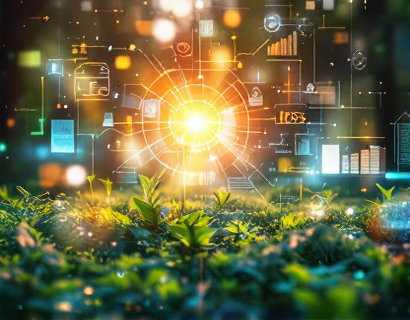Elevating Farming and Horticulture through Advanced Environmental Analytics
The agricultural sector, particularly farming and horticulture, stands at a pivotal moment in history. With the global population projected to reach 9.7 billion by 2050, the demand for food is increasing exponentially. To meet this demand sustainably, the industry must adopt innovative solutions that optimize resource management and enhance productivity while minimizing environmental impact. Advanced environmental analytics emerges as a transformative force in this context, offering data-driven insights that can revolutionize the way we approach agriculture.
Understanding Advanced Environmental Analytics
Advanced environmental analytics refers to the use of sophisticated tools and techniques to collect, analyze, and interpret environmental data. This data can encompass a wide range of parameters including soil moisture levels, temperature, humidity, light intensity, and nutrient content. By leveraging these insights, farmers and horticulturists can make informed decisions that lead to more efficient use of resources and higher crop yields.
The Role of Data in Modern Agriculture
Data has become the new currency in agriculture. The ability to collect and process vast amounts of environmental data allows for precise and timely interventions. For instance, soil moisture sensors can provide real-time data on soil conditions, enabling farmers to irrigate only when necessary, thus conserving water and preventing over-irrigation. Similarly, temperature and humidity sensors can help in monitoring the microclimate within greenhouses, ensuring optimal growing conditions for various crops.
Optimizing Resource Management
One of the most significant benefits of advanced environmental analytics is its ability to optimize resource management. By monitoring and analyzing data, farmers can identify patterns and trends that inform their decision-making processes. For example, precision irrigation systems can be calibrated based on soil moisture data, ensuring that water is used efficiently and only where needed. This not only conserves water but also reduces energy costs associated with pumping and distributing water.
Fertilizer management is another critical area where data-driven insights can make a substantial difference. Soil nutrient sensors can provide real-time data on nutrient levels, allowing farmers to apply fertilizers more precisely. This reduces the risk of over-fertilization, which can lead to nutrient runoff and environmental pollution. By applying the right amount of fertilizer at the right time, farmers can enhance crop yields while minimizing environmental impact.
Enhancing Crop Yields
Advanced environmental analytics also plays a crucial role in boosting crop yields. By monitoring environmental conditions and plant health, farmers can identify potential issues before they become critical. For instance, early detection of pest infestations or disease outbreaks can be achieved through the use of drones equipped with multispectral cameras. These cameras can capture detailed images of crops, highlighting areas that require attention.
Additionally, data analytics can help in optimizing planting and harvesting schedules. By analyzing historical weather data and current conditions, farmers can determine the best times to plant and harvest, maximizing the chances of a successful crop. This is particularly important in regions with unpredictable weather patterns, where timely interventions can mean the difference between a bountiful harvest and a failed crop.
Promoting Sustainable Practices
The integration of advanced environmental analytics in farming and horticulture not only enhances productivity but also promotes sustainable practices. Sustainable agriculture is essential for ensuring the long-term viability of the industry and protecting the environment. By using data to make informed decisions, farmers can reduce their ecological footprint and contribute to a healthier planet.
One key aspect of sustainable agriculture is soil health. Advanced analytics can provide insights into soil composition and health, helping farmers to implement practices that improve soil structure and fertility. For example, by monitoring organic matter content and microbial activity, farmers can adopt practices such as cover cropping and reduced tillage, which enhance soil health and reduce erosion.
Water conservation is another critical component of sustainable agriculture. Advanced analytics can help in designing and managing irrigation systems that use water more efficiently. Drip irrigation, for instance, can be optimized based on real-time soil moisture data, ensuring that water is delivered directly to the root zone of plants. This not only conserves water but also reduces the energy required for pumping and distributing water.
Environmental Stewardship
Environmental stewardship involves taking proactive steps to protect and preserve the natural environment. In the context of farming and horticulture, this means minimizing the use of chemical inputs, reducing greenhouse gas emissions, and promoting biodiversity. Advanced environmental analytics can support these goals by providing data that informs environmentally friendly practices.
For example, by monitoring air quality and emissions, farmers can identify opportunities to reduce their carbon footprint. This might involve switching to electric or hybrid machinery, optimizing fuel usage, or implementing practices that sequester carbon in the soil. Additionally, data on local wildlife and habitat can guide farmers in creating buffer zones and planting native species, which support biodiversity and ecosystem health.
Case Studies and Real-World Applications
Several case studies demonstrate the practical benefits of advanced environmental analytics in farming and horticulture. In one instance, a large-scale vegetable farm implemented a system of soil moisture sensors and weather stations to optimize irrigation and fertilization. The result was a 30% reduction in water usage and a 20% increase in crop yields. The farm also reported a significant decrease in nutrient runoff, contributing to better water quality in nearby streams.
Another example comes from a greenhouse operation that used drones equipped with multispectral cameras to monitor plant health. By detecting early signs of stress, the farm was able to address issues such as pest infestations and nutrient deficiencies proactively. This led to a 15% increase in crop quality and a reduction in the use of chemical pesticides.
Technological Advancements and Future Prospects
The field of environmental analytics is rapidly evolving, with new technologies and innovations continually emerging. Artificial intelligence and machine learning are playing an increasingly important role in data analysis, enabling more accurate predictions and personalized recommendations. For instance, AI algorithms can analyze historical and real-time data to predict crop yields, optimize resource usage, and identify potential risks.
Furthermore, the integration of Internet of Things (IoT) devices is making it easier for farmers to collect and manage data. Smart sensors and connected devices can transmit data in real-time to a central platform, where it can be analyzed and acted upon. This connectivity not only enhances efficiency but also provides farmers with a comprehensive view of their operations, from field to market.
Challenges and Considerations
While the benefits of advanced environmental analytics are clear, there are also challenges and considerations that need to be addressed. One of the primary challenges is the initial cost of implementing these technologies. High-quality sensors and data analytics platforms can be expensive, particularly for small-scale farmers. However, the long-term benefits in terms of increased productivity and reduced costs often justify the investment.
Another consideration is the need for technical expertise. Farmers and horticulturists must be trained to collect, interpret, and act on the data provided by these systems. This requires a shift in mindset and skill sets, but many organizations and educational institutions are stepping in to provide the necessary training and support.
Building a Data-Driven Future
Embracing advanced environmental analytics is not just a trend; it is a necessity for the future of farming and horticulture. As the global population continues to grow, the demand for food will only increase, making it imperative to adopt sustainable and efficient practices. By leveraging data-driven insights, farmers and horticulturists can optimize resource management, enhance crop yields, and promote environmental stewardship.
The path forward involves a collaborative effort between technology providers, agricultural professionals, and policymakers. By working together, we can develop and implement solutions that are accessible, effective, and scalable. The future of agriculture is data-driven, and those who embrace this shift will be well-positioned to thrive in a changing world.










































